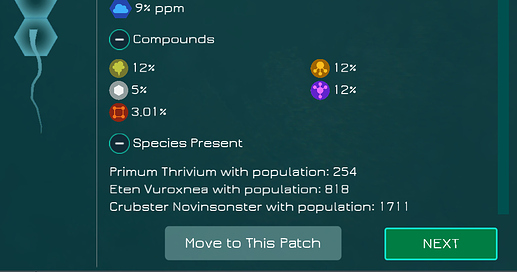Before posting about returning on the Discord and forums, I downloaded the latest build and tried giving the game a spin to see what changes there were since I was last here. I gotta say that playing made me think back to the state of the project in 2012 and 2013, where even just creating a runnable demo was groundbreaking for us. The game has made HUGE strides to where it is today, it’s amazing to see.
I also know that I’m returning to the project completely out of sync of the development cycles so I know you guys already have a list of planned features for the next update, so this is more to set down ideas for following versions.
Things I Liked
- The visuals are fantastic and keep getting better with every version. I love the new particle effects, the background blur, and the radial blur, it makes everything look so much better.
- The ATP balance bar is super nice to have in the editor
- The “After Action Reports” or whatever they’re called that show up every time you enter the editor are so cool. It’s so nice seeing how your patch and other patches develop every generation, as well as tracking my success vs my rivals.
- I love how patches feel different with different aesthetics, compound levels, and species present.
- The graphics team is doing a great job with the models. The membrane, flagella, and other organelles all look great and the membrane dissolving animation is really nice as well.
- I love the stress of watching my population wax and wane in response to my success and failure, it feels like I’m guiding a species and am responsible for their success
- The new UI is fantastic and I love the compact options for the bottom left UI elements
Suggestions
- The hitbox for iron particles should be made smaller. Sometimes I bump into the water around it.
- A few more things should be labelled in the UI. For example, let me see exactly how much Ammonia or Phosphate I have left to collect to reproduce. When I get close to full, I can’t tell if I’m at 99% or 100%. Also, in the editor, I can’t see the exact numbers on the ATP balance bar so I can only know how much an organelle will change it by placing one and seeing how the bar changes.
- The Microbe Stage themes get a little repetitive for me, I think it would be nice to add some new music. Perhaps its because I’ve playtested the Microbe Stage so many times?
-
When cells swim through compound clouds, it can look a little weird. I think the pickup range for cells should be a circle not a square. Can we make it so the compounds fade out instead of instantly disappearing? Also is a way to make it match the shape of the hexagons of the cell?
- Cells should be limited as to how dark their colour can become. Dark cells are almost impossible to see in dark biomes. Maybe I was just playing in poor lighting at the time, so I can test this one again.
- When engulfing, if you touch a target with your membrane their speed should reduce by more. Otherwise I have to evolve to both be larger and considerably faster than my prey, which is hard to do. May need to playtest this one more though to confirm it.
- The tooltip in the top right seems to grossly exaggerate the numbers in the clouds. It’ll tell me there’s thousands of ammonia in a cloud that maybe yields me 4 or 5. Is this a bug? Is this just me?
- We should replace the static bubbles with 3D bubbles. With the amount of improvements we’ve made to the visuals, I think the 2D bubbles are one of the vestiges of the old aesthetic that we could do well to finally remove/improve.
- I feel like the recent updates have made organelle upgrades more important. I felt the need for organelle upgrades a lot more than in earlier versions. At the moment the only way you can improve your cell is to get bigger. But there is no way to refine your cell while staying the same size, such as by evolving increased efficiency for your existing organelles.
- Locked organelles should be hidden. I think this adds to the sense of discovery by only showing unlocked organelles. It also makes the early game easier by reducing the number of organelles the player first sees when first entering the editor.
- Let the player see what range of environmental variables they can survive. For example, in the main editor screen there could be a panel showing the range of temperatures, light levels, etc. that you can survive. Then, if I select a patch the temperature should highlight red if it is outside of my tolerable zone. This feature could perhaps be combined with an update that adds organelles for environmental tolerance (like antifreeze proteins).
- It felt like the AI species were growing far faster than I could hope to compete with. Am I the only one to experience this? Perhaps I could test it more.
-
The list of AI species in a patch can quickly get hard to read when there are a lot of them. I think if you bolded the species name in each line it’d look better.


